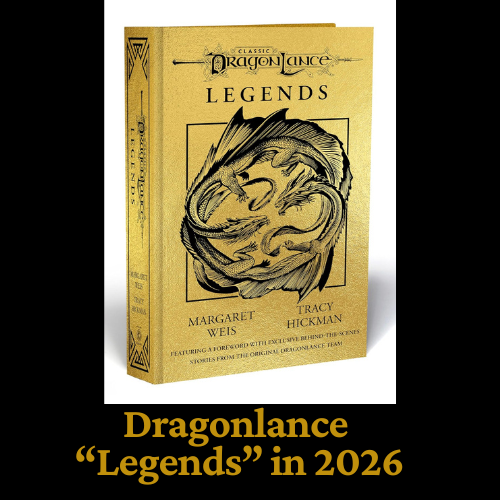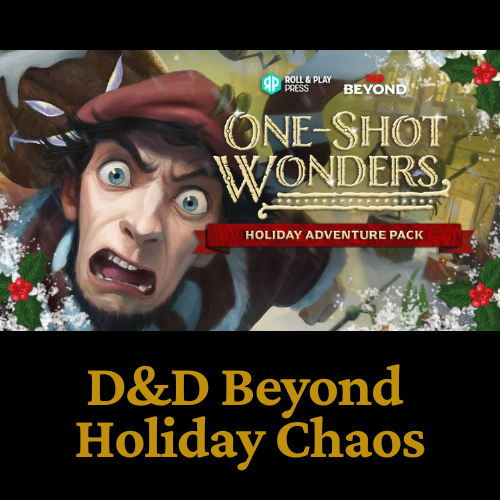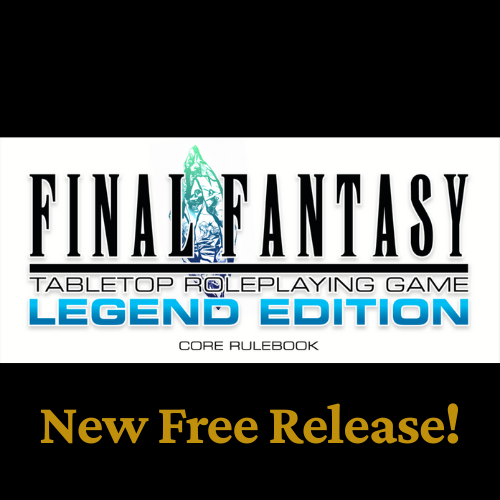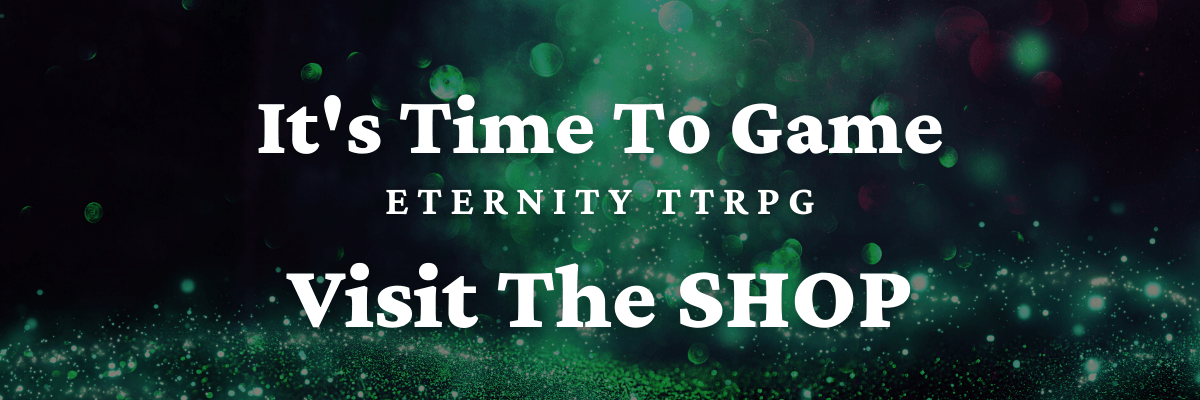6 Keys to Maximize Your RPG Campaign
Playing in an ongoing RPG campaign takes tabletop RPG experiences to the next level. If - that is - you can keep the game going, and find ways to make the most of the experience for all players at the table.
Few gaming experiences can compare to the sense of epic destiny that envelops ongoing TTRPG (tabletop RPG) adventures. There’s a sort of threshold that’s reached once a gaming group has played multiple sessions together. Once the threshold is crossed, it pushes the story from something merely fun, to something that’s truly compelling. Once a game has gone from something your players are showing up to try out, to something they can’t wait to experience each week, you know you’re in the “flow” of a great RPG campaign.
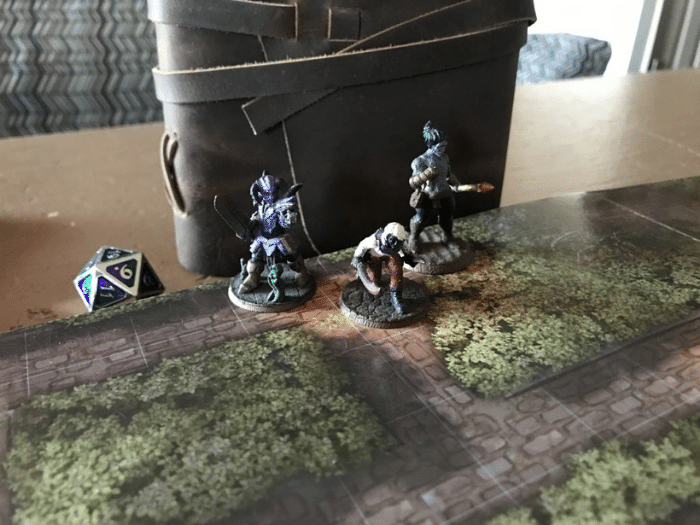
How to Make An Entire RPG Campaign Successful
Creating the right environment for an RPG campaign to develop is key for its success. Here are my top recommendations to help you finish an entire campaign with your gaming group (more details on each bullet point provided, below):
- Focus on Fun
- Make Sure Everyone Gets to Participate
- Create a Cohesive Story
- Keep Games Consistent
- Ask Yourself: Do You Really Want A Full Campaign?
- Utilize an RPG Planner
Now that you know the benefits of playing a full campaign, and also that most gaming groups don’t get that full experience, you might be interested in some tools to increase your odds.
1. Focus on Fun
The best way for you to have a campaign succeed is to remember that the purpose of gaming is to have fun. Prioritize fun over having a successful campaign, and your campaign is more likely to endure.
2. Make Sure Everyone Gets to Participate
One of the main ways to keep games fun for everyone is to ensure each person at the table gets to participate in the game in the way they want. Some people will inevitably contribute more to the game than others, and that’s ok. Just so long as no one feels excluded, or unheard.
3. Create a Cohesive Story
If you are running the game’s story, or contributing to it in any way, do your best to make the story logical. It doesn’t have to be a masterpiece, at the start. Simply create objectives for the group, conflicts to oppose those objectives, and interesting pacing. Ultimately, there are many skills that can be mastered in telling a story. The important thing to remember is that you don’t need to become an expert. Your gaming group will benefit, however, from intentionality on your part, between games, in creating story cohesion and flow.
4. Keep Games Consistent
Try to game at the same time of day, at the same location, with a similar gaming environment, as much as you can. This isn’t a hard-and-fast rule. However, people do respond well to consistency, since they learn what to expect. This also helps with scheduling, as people can block off the same time and day each week (for example) for gaming.
5. Do You Really Want A Full Campaign?
Before telling a group of people that you want to play an entire RPG campaign, make sure it’s what you really want. As great as TTRPG campaigns are, there is a real time investment to them. If you, as the person who gets people excited about a new RPG campaign, decides part way through that you’re not interested in continuing, chances are high that the group will fall apart. If you’re unsure from the beginning, it’s often better to simply play a one-shot adventure, or perhaps a few adventures, rather than committing to an entire campaign.
6. Get an RPG Campaign Planner
Our final tip for keeping a campaign going successfully is to utilize an RPG campaign planner. Once a story develops enough, it takes on a life of its own. And it can become difficult, over time, to keep track of all the characters, locations, unique items, and side stories that emerge. Thankfully, experienced gamers have created all kinds of templates, and if you prefer to invest, products, that can be used to organize everything. RPG campaign planners make it easier to track notes of all kinds, develop storylines, and create consistency and cohesion in ongoing adventures.
Basically, you have four options when it comes to RPG campaign planners. All options are just varied combinations of either physical or digital, and free or paid:
- Physical – Unpaid
- Digital – Unpaid
- Physical – Paid
- Digital – Paid
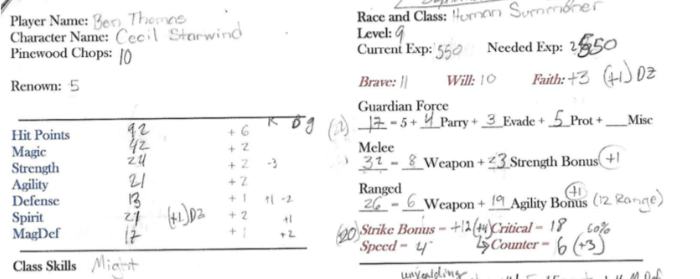
Physical and Unpaid RPG Campaign Planner
A physical and unpaid RPG campaign planner would be something like an rpg campaign template you can find, online. It doesn’t need to be fancy, at all. To be honest, even a notebook will suffice. In fact, when it comes down to it, really anything that you can write on and take notes with, will do. Whether you search for online templates, or create your own, make sure it has space to track the following key elements:
- Major Player Characters (PCs)
- Major Non-Playable Characters (NPC)
- Villains
- Goals, Oppositions, and Inner Conflicts of All Important Characters
- Unique Items
- important Locations
- Important Backstory/ Background Notes for Any of the Above
- Side Quest Ideas from Any of the Above
- Major Plot Points, both Past and Future
- Opportunities for Plot Twists
- Clues Given to Players that May Foreshadow Plot Points or Twists
- Maps and Other Campaign Handouts
Digital and Unpaid RPG Campaign Planner
There are many digital and unpaid RPG campaign planners available online, today. Many of them take care of all the points listed, above, and even offer more tools than those. Many of these websites also offer options for paid subscriptions, but can be great resources even without. If you don’t mind having a computer or tablet at your gaming table, and don’t mind if the rest of your gaming group does as well, tech can be a great way to go. Some gaming groups find it cumbersome to have computers take up space at the gaming table, or find the technology distracting. However, this is really just a matter of preference.
Physical and Paid RPG Campaign Planner
A physical and paid RPG campaign planner would be something like a put-together book for rpg campaigns. It usually comes with artwork, interesting ideas, a high-quality cover and inside pages, and can certainly be worth the money. If one thing is true about TTRPGs, it’s that you get out what you put in. Sometimes it’s worth investing a few dollars to purchase something that helps the game session feel more “magical” to you. If you find things like artwork, nice covers, and quality notebooks to be helpful for your creativity, you may consider buying a nice RPG campaign planner. Or, even simply buying a nice leather-bound notebook.
Digital and Paid RPG Campaign Planner
Digital and paid RPG campaign planner websites, as mentioned above, often have a free version. Before paying for anything, you might first try out a site’s unpaid option. Usually, all the advanced features that come from a paid subscription aren’t especially useful until a campaign reaches a certain stage of complexity, anyways. However, once a campaign becomes pretty big, with numerous interweaving plots and characters, having an online RPG campaign planner can be very useful. Technology certainly has its place at the gaming table, as it can convey large amounts of visuals and text very simply. If you’re interested in utilizing software at your gaming table, you might check out one of the following online RPG campaign planners for yourself:
- World Anvil
- Obsidian Portal
- Kanka
- Scabard
- DnD Campaign Planner
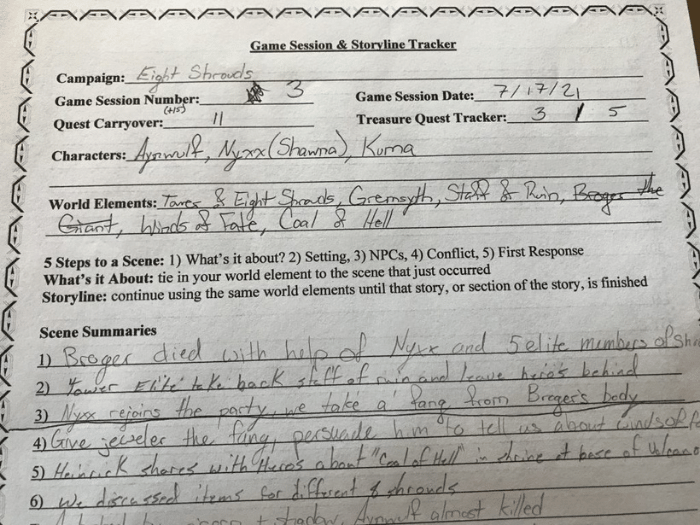
Benefits of a Long-Term RPG Campaign
There are serious benefits to playing in a long-term game. For most people (in my experience), nearly all the best moments you’ll ever have while playing tabletop RPGs will come from playing in lengthy campaigns. If you know anyone who’s played some long-term RPG campaigns, ask them – they’re likely to confirm.
This means that if you’ve never played in a long-term game, you’re probably missing out on the types of experiences you’ve always guessed TTRPGs are capable of providing (more details on each bullet point provided, below):
- Connection to your Character
- Connection to Locations
- Connection to Villains
- Connection to the Story
- Epic Moments
- Mastery of the Game
- Comfortability Roleplaying
- Increased Creativity
- A Story You Look Forward To
Connection to Your Character
It takes a number of game sessions for your character’s backstory to come forward in the game, and become applicable for the current story. Once it does, though, you’ll see parts of your character come to life in ways you probably couldn’t imagine, beforehand.
Connection to Locations
Troea, the city your gaming group started in, probably doesn’t mean much the first few gaming sessions. Only after you realize the “guardian” of the city – for whom you’ve been completing important tasks – is a lich, does the city really mean something to you.
Connection to Villains
The first time you meet a villain in a story, you really don’t know if they’re going to be all that important to your character’s story. After all, they could just be a minor villain, or be overthrown by one of their own henchmen, in coming weeks or months. It’s only after you’ve faced a villain, won or lost, then had to face them again, that you see something build. Repetition of gaming sessions with the same villain creates the kind of connection where you love to hate them. Or, hate that you love them.
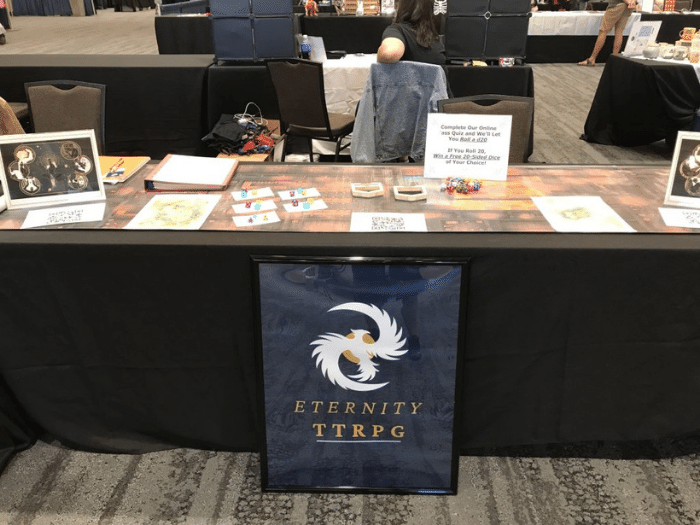
Connection to the Story
The results of connecting more to your character, locations in the game, villains, and everything related, is that you connect to the story. The game goes from being something merely fun and social, to something meaningful. When you connect to your game’s story, you can’t wait to see what happens next. That’s when things start getting intense.
Epic Moments
Buildup of the gaming group’s connection to the ongoing story inevitably results in emotional investment. No matter the moment – a ring falling into a volcano, the death of a demi-god, or the coronation of a king – an event is only made “epic” because of catharsis. Only players who have gamed long hours together unlock within themselves the capacity to experience epic tabletop RPG moments.
Mastery of the Game
Many things in life become more fun when we develop more skill in the activity. It might be weird to think that you can become “better” at a TTRPG, but it’s true. You can. And when you do get better at roleplaying, and better at your combat tactics, the game does feel more rewarding.
Comfortability Roleplaying
On the topic of roleplaying, if you’re someone who likes the idea of getting into character but has some difficulty finding your rhythm, long campaigns definitely help. Regular play with the same group of people tends to lower inhibition a bit. Also, the more you get invested in the campaign’s story, the easier it becomes to connect your character to the gaming world. And from there, it’s almost only natural to fall into roleplaying.
Increased Creativity
Similarly, spending more time – and becoming more invested – in a gaming world allows for creative ideas to flow more freely. Great campaigns and stories in a TTRPG group don’t just come from the game master. Instead, the best campaigns come from every member of the group creatively contributing to what happens, or what should happen, next.
A Story You Look Forward To
The biggest benefit of an ongoing RPG campaign is that the game becomes something you look forward to each time you play. There’s nothing wrong with casual games, of course. There is a difference between casual games, and deeply meaningful ongoing campaigns, however. Consider the difference between a watching a YouTube video and watching the season finale to your favorite show. No comparison, right? There’s just not the same emotional build up and intensity, until you’ve invested the time required to cross the threshold of greatness.

Is It Difficult to Keep an RPG Campaign Going?
Unfortunately, even with the many great benefits of an ongoing tabletop gaming campaign, it can be difficult to get one off the ground. Many gaming groups start out with the idea of playing an entire RPG campaign. There’s usually one person, or a couple, who becomes the driving force for getting the group together, and consistently playing.
In many cases (maybe even in most cases), however, an “RPG campaign” turns into a single one-shot adventure. Or, perhaps a few gaming sessions strung together, loosely. Then, interest in the game burns out, people get busy, or any number of life-related events take place to derail the budding storyline.
For a little context, I’ve been playing TTRPGs for about 20 years. In all my tabletop RPG experiences, I’ve played in five full-length campaigns. Besides those, I’ve played in maybe eight more partial-length “campaigns,” and began another dozen or so “campaign attempts.” The campaign I’m playing in now, if it makes the distance, will only be my sixth. It’s not easy to get a group of people together, consistently, for any length of time. It was certainly easier when I was in college. Now, as an adult, with real responsibilities, it takes a bit more effort to keep things rolling.
Try Out a New Kind of TTRPG
Sometimes, the best way to make a TTRPG campaign succeed is to try out a new game. If you’ve never played a group GM RPG before, check out Eternity TTRPG.
Campaigns in Eternity TTRPG have immense longevity to them since everyone at the table contributes to the creativity of the gaming world, NPCs, villains, storylines, and more. It’s also set up so that there’s a lot of cohesion amongst the group in the development of stories.
Have Fun With Your Next RPG Campaign
Hopefully, this article has given you some reason to try out an RPG campaign, tips to make it endure, and ideas for planning it out. The last piece of advice for you is to have fun with it. Nothing matters more, in tabletop roleplaying.
Dice, Dungeons, Games & More - Eternity TTRPG
Share This Article
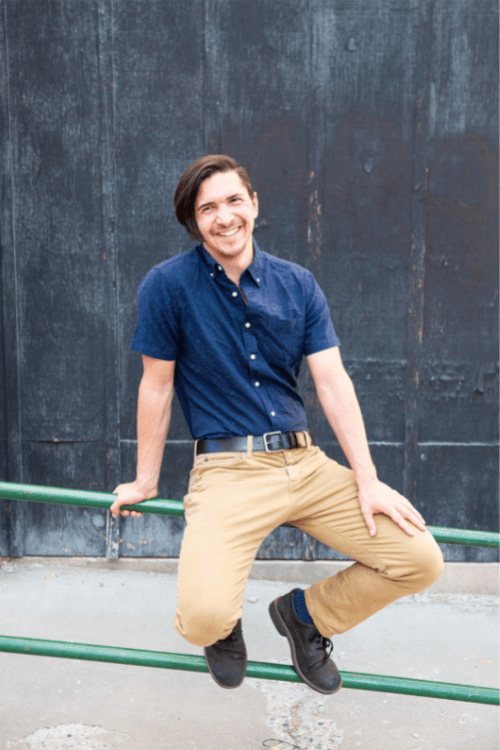
Author - Jacob Tegtman
Dear reader, I hope you enjoyed this article. Tabletop gaming has been a passion of mine since I was 6 years old. I've played just about every game from Dungeons and Dragons to video games like Final Fantasy. These games have inspired me, made me laugh, made me cry, and brought me endless hours of enjoyment.
I started Eternity TTRPG - and the indie tabletop game that goes along with it (Eternity Shop) - to share my love of gaming with others. I believe that in our technology-driven age, tabletop games help bring a sense of magic and community back into our world.
If you love the site, please share it with others! I have lots of gaming-related material for you to peruse and use in your own gaming sessions. If you have any questions about the site or want to contribute, just send me a message using the "Contact" page, which you can find in the site's footer.
